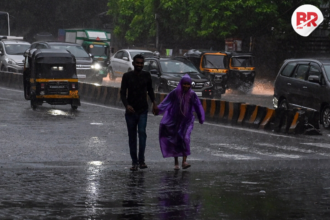
Jal Jeevan Mission wants to do something no Indian government has done before: put safe, running tap water in every rural household—by 2028. That’s over 190 million homes. The target is huge. And while the deadline recently shifted from 2024 to 2028, the intent remains bold: deliver dignity, health, and daily ease through something as basic as water.
What This Means for a Rural Family
For many villagers, especially women and children, water isn’t just a resource—it’s a burden. Lakhs of people still walk miles daily to collect water. A tap at home means fewer illnesses, more school hours for kids, and more economic opportunities for women. It’s not a luxury. It’s liberation.

Don’t Celebrate Yet: The Clean Water Challenge
But here’s the catch—clean water isn’t guaranteed. Just because water flows doesn’t mean it’s safe. Arsenic, fluoride, and industrial waste pollute many of India’s water sources. According to NITI Aayog, nearly 70% of India’s water is contaminated. That’s a public health disaster waiting to happen.
Pipes rust. Filters clog. Tanks crack. Infrastructure wears out faster than policies do. If local systems aren’t properly maintained, this massive project could turn into a nationwide plumbing failure. And once pipes stop working, getting them fixed—especially in remote areas—is often a bureaucratic maze.
That’s why Jal Jeevan Mission goes beyond just installing taps. It’s training communities—especially women—to test water quality. Local committees are being formed to manage village-level systems. This grassroots approach is what sets it apart from earlier top-down efforts.
Progress on Paper: Where We Are Today
The good news? Over 14 crore rural households already have tap water connections, as per the official Jal Jeevan dashboard. There’s also Jal Jeevan Survekshan, a district-level ranking system to track water quality and governance. Mobile labs, public dashboards, and monitoring tools suggest that the government is trying to stay accountable.
Will this mission still deliver when the spotlight is gone? Will taps run in drought-hit villages seven years after the deadline? That’s the true measure of success—not ribbon-cutting ceremonies but lasting impact.
The biggest threat isn’t funding or technology—it’s boredom. Water testing is dull. Maintenance is thankless. But without these, everything falls apart. Jal Jeevan Mission must tackle apathy just as aggressively as it tackles arsenic.
Jal Jeevan Mission is India betting big on clean water. If it works, it could transform rural life like few policies ever have. But for that to happen, we’ll need more than pipes—we’ll need perseverance.
Also Read India’s First ISS Biology Mission Targets Algae—But What They’re Hoping to Find Is Wilder












